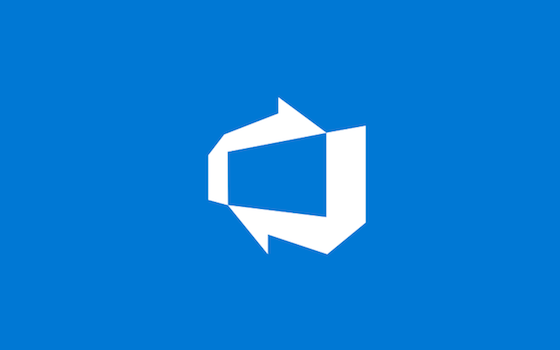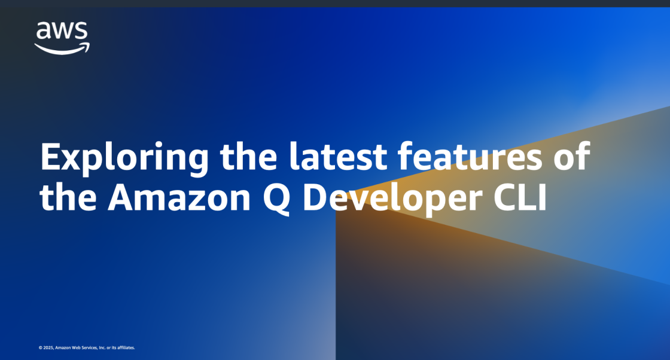Devops News
Medium
17

Streaming, Storing, Scaling: A Real-World Guide to Data Infrastructure for AI
- The article provides insights into the real-world architecture and tooling required for AI in production.
- Real-world AI systems require handling real-time data, which necessitates the use of streaming systems.
- Choosing the right storage pattern for multi-modal AI data and utilizing batch and streaming processing are crucial.
- Scalability in AI systems involves not just compute but also architectural considerations and the importance of monitoring for early issue detection is emphasized.
Read Full Article
1 Like
Dev
0

Image Credit: Dev
Understanding Docker Security Basics: Building a Strong Foundation
- Docker simplifies application deployment and accelerates development cycles through containerization.
- Understanding Docker security is crucial to prevent vulnerabilities and data breaches.
- Containers share the host OS kernel, presenting unique security challenges.
- Isolating processes and managing resources with namespaces and control groups are core Docker security features.
- Implementing the principle of least privilege is essential for container security.
- Using minimal and trusted base images, scanning for vulnerabilities, and employing multi-stage builds enhance image security.
- Network segmentation, firewall rules, and encryption are key for network security in Docker.
- Advanced runtime security features like Seccomp, AppArmor, and SELinux minimize risks.
- Monitoring, logging, and updating Docker components regularly are vital for a strong security posture.
- Mastering secure orchestration, secret management, image signing, and incident response planning enhances Docker security.
Read Full Article
Like
Medium
262

Image Credit: Medium
Testing Strategies That Actually Work: How to Build Confidence in Every Release
- Continuous Delivery authors, Jez Humble and David Farley, emphasize the importance of transforming testing into a strategic pillar for reliable software delivery.
- Humble and Farley introduce testing quadrants that structure the testing strategy into four quadrants (Q1, Q2, Q3, Q4), highlighting the significance of addressing all quadrants.
- Shift-left testing is crucial for reducing the cost of bug fixes by integrating testing early in the development cycle, with suggestions like Test-Driven Development (TDD) and Behavior-Driven Development (BDD).
- Aim for 80% code coverage for critical components, use tools like Cucumber or SpecFlow, and implement a test automation pyramid for streamlining testing efforts as suggested by Humble and Farley.
Read Full Article
15 Likes
Microsoft
283

Image Credit: Microsoft
One Pipeline to Rule Them All: Ensuring CodeQL Scanning Results and Dependency Scanning Results Go to the Intended Repository
- In the world of code scanning and dependency scanning, ensuring CodeQL scanning results and Dependency Scanning results go to the correct repository is crucial.
- Improper configuration may lead to results getting published to the wrong repository, causing chaos.
- To address this issue, utilizing inferred publishing is recommended to automatically detect the repository based on the current working directory.
- Using inferred publishing helps ensure that scan results go to the intended repository, preventing misplacements.
- When using inferred publishing, errors may occur in multi-repo scenarios due to ambiguity in determining the valid Git repository.
- To handle errors, setting 'workspaceRepo: true' can explicitly identify the correct repository for analysis and publication.
- The configuration provided in the guide is applicable not only to CodeQL static analysis but also to Dependency Scanning.
- It is crucial to ensure that Dependency Scanning results are also directed to the intended repository by configuring the pipeline appropriately.
- By adopting inferred publishing and best practices, developers can efficiently manage their code scanning workflows and enhance security measures.
- Configuring the pipeline correctly using inferred publishing can significantly impact the team's security workflows and overall code scanning efficiency.
Read Full Article
17 Likes
Discover more
- Programming News
- Software News
- Web Design
- Open Source News
- Databases
- Cloud News
- Product Management News
- Operating Systems News
- Agile Methodology News
- Computer Engineering
- Startup News
- Cryptocurrency News
- Technology News
- Blockchain News
- Data Science News
- AR News
- Apple News
- Cyber Security News
- Leadership News
- Gaming News
- Automobiles News
Dev
408

Image Credit: Dev
🚀 Leveraging the Power of AWS ECS to Deploy Flask Tic-Tac-Toe Game
- The article discusses deploying a Flask Tic-Tac-Toe game on AWS ECS using containers for a modern app deployment journey.
- Pre-requisites include having Flask, Docker, and AWS CLI installed and configured on your system.
- The process begins with building the game logic and backend using Flask and setting up the project structure.
- Frontend design with Tailwind CSS is implemented for the game interface to play the Tic-Tac-Toe game.
- The game can be run locally by using the 'flask run' command and accessing it via localhost.
- Containerizing the Flask app involves creating a Dockerfile, building the Docker image, and pushing it to AWS ECR.
- Deployment on AWS ECS is then executed by creating an ECS cluster, task definition, and service for the app to run live.
- Accessing the deployed app via the public IP is the final step to see the Flask Tic-Tac-Toe game running on AWS ECS with Fargate.
- The article concludes with a cleanup section on deleting AWS resources to avoid unexpected charges.
- Overall, the process involved building, containerizing, deploying, and accessing the Tic-Tac-Toe game on ECS as a complete DevOps deployment cycle.
Read Full Article
24 Likes
Dev
352

Image Credit: Dev
Scaling to 3 Billion Monthly API Requests Without Microservices: A Pragmatic DevOps Journey
- Floran Pagliai, CTO at Weglot, shares their journey of handling over 3 billion API requests per month with a monolithic approach.
- Initially joining as the first developer, Pagliai focused on migrating to Symfony, setting up CI/CD pipelines, and preparing for scalability.
- Utilizing Cloudflare for caching, Weglot manages to cache 55% of requests at the edge, streamlining their single /translate endpoint.
- Despite the trend towards microservices, Weglot continues with a monolithic PHP/Symfony application, prioritizing mastery, simplicity, and practicality over tech trends.
Read Full Article
21 Likes
Amazon
292

Image Credit: Amazon
Exploring the latest features of the Amazon Q Developer CLI
- The Amazon Q Developer CLI has been updated with new features and enhancements, focusing on improving user experience and context management.
- Users can now persist conversations using the 'q chat --resume' command, saving time and effort in rebuilding context.
- New commands '/save' and '/load' allow for explicit saving and restoring of conversation states, aiding in managing multiple threads.
- MCP servers are now background-loaded, improving startup time, and 'q mcp' subcommand facilitates server configuration management.
- Enhanced context control features include git-aware file selection, fuzzy search for commands, and improved context display.
- Dynamically adding context to messages with context hooks enhances response quality without manual management.
- New commands like '/usage' and '/compact' help manage context window usage effectively to optimize available space.
- The addition of image support in q chat enables sharing visual information for better interaction.
- Features like Ctrl + j for newline insertion and /editor command for text editing enhance prompt composition.
- Expanded regional support in the Frankfurt region benefits European users with reduced latency and improved service.
Read Full Article
17 Likes
Dev
374

Image Credit: Dev
Terraform Infrastructure as Code Best Practices
- Terraform is crucial for Infrastructure as Code (IaC), but maintaining Terraform code as infrastructure scales requires best practices.
- Organize Terraform code with a consistent directory structure for better maintenance and deployment consistency.
- Split resources into logical modules to make code more maintainable and reusable.
- Use variables for configuration to ensure flexibility and documentation within modules.
- Implement consistent naming and tagging conventions for improved resource management.
- Utilize data sources to reference external resources and keep code flexible and maintainable.
- Maintain consistent backend configurations for Terraform state with proper locking for team collaboration.
- Version providers and modules to ensure reproducible infrastructure and prevent unexpected changes.
- Use loops and conditionals for efficient, concise code and implement automated testing for validation.
- While workspaces can be useful, separate environment directories with state files are preferred for production infrastructure.
Read Full Article
22 Likes
Dev
314

Image Credit: Dev
10 Lines of Awesome: Building HTTP Servers the Go Way 🔥
- Go's HTTP package simplifies setting up web servers, making it easy and efficient.
- The net/http package in Go provides all the tools to build production-ready HTTP servers without external dependencies.
- Go automatically handles security concerns like Slowloris attacks, requiring less manual configuration.
- Building a basic Go HTTP server requires minimal code and is highly efficient.
- A simple Go HTTP server can handle thousands of concurrent connections with default settings.
- Adding routes and middleware in Go for performance optimization is straightforward and efficient.
- Go's HTTP multiplexer uses a prefix-based matching system, contributing to its fast performance.
- Performance tip: Set appropriate timeouts in high-traffic servers to prevent resource exhaustion.
- Go's minimalist approach to HTTP servers emphasizes simplicity as a competitive advantage in software development.
- Building with Go eliminates the need for external frameworks and offers production-ready performance with minimal code.
Read Full Article
18 Likes
Dev
141

Image Credit: Dev
How to Set Up GitLab CI/CD for Deploying Frontend Apps to Vercel
- Setting up GitLab CI/CD for deploying frontend apps to Vercel automates the deployment process for continuous delivery.
- The guide covers configuring GitLab pipeline, setting environment variables, and writing deployment scripts for seamless deployment.
- Prerequisites include GitLab and Vercel accounts, and prior understanding from a related article is recommended.
- The process involves defining stages, building the frontend app, and deploying it to Vercel.
- Vercel API token setup in GitLab is crucial for deploying the frontend app securely.
- After setting up, pushing changes to GitLab triggers the deployment pipeline automatically.
- Monitoring the pipeline progress and accessing the Vercel dashboard ensures a successful deployment.
- Deployment completion allows viewing the app on the Vercel dashboard and troubleshooting if needed.
- In conclusion, GitLab CI/CD streamlines frontend app deployment to Vercel for faster iterations and updates.
- Automating deployments enhances productivity and keeps the live app up-to-date with code changes.
Read Full Article
8 Likes
Dev
43

Image Credit: Dev
Analyzing DuckDB’s Performance Optimization through TOPN and COUNT DISTINCT Operations
- DuckDB is favored for data analysis due to its lightweight nature and ease of integration.
- Efficiency and fast execution are crucial beyond code writing ease.
- Performance optimization in DuckDB is explored using TOPN and COUNT DISTINCT operations.
- Testing DuckDB's performance optimization in realistic scenarios with large datasets.
- DuckDB excels in handling entire-set TOPN operations efficiently.
- Maintaining a small set of size N for performance improvement in DuckDB.
- Grouped TOPN operations reveal shortcomings as DuckDB excessively uses sorting.
- Users may need to optimize complex queries manually in DuckDB scenarios like grouped TOPN.
- COUNT DISTINCT operation in DuckDB may struggle with ordered data, lacking optimization.
- In comparison, esProc SPL showcases faster performance in handling ordered data scenarios.
Read Full Article
2 Likes
Dev
318

Image Credit: Dev
Another security patch. Another missed opportunity.
- Many systems today are designed to operate without verifying user authentication, leaving them vulnerable to exploits and breaches.
- The recent zero-day vulnerability in Fortinet's system highlights the ongoing issue of systems having unchecked authority over sensitive data.
- Historical vulnerabilities in Fortinet's systems have showcased the risk of having 'login-optional' bugs that allow unauthorized access.
- Proposing a shift from 'access control' to 'authority control' to enhance security measures and prevent unauthorized access to sensitive data.
Read Full Article
19 Likes
Javarevisited
253

Image Credit: Javarevisited
21 Jenkins and CI/CD Interview Questions for Java Developers and DevOps (with Answers)
- Jenkins related interview questions are crucial for Java developers and DevOps engineers.
- Jenkins is a vital tool for automation in the Java world, necessary for build, test, and deploy pipelines.
- Having a good understanding of Jenkins and its plugins is essential for setting up pipelines, especially in green field projects.
- Whether junior or experienced, familiarity with Jenkins is important as it is widely used in companies and projects.
Read Full Article
15 Likes
Dev
38

Image Credit: Dev
From Zero to Cloud: Building Your First Java Web App on AWS with VS Code
- The project involves building a CI/CD pipeline by setting up an EC2 instance on AWS and editing a web app entirely in the cloud.
- Key steps include launching an EC2 instance, creating a key pair for authentication, enabling SSH access, installing VS Code, and connecting to the EC2 instance.
- Tools installed include Java and Apache Maven for building and managing Java-based web apps.
- The project also covered concepts like SSH, cloud-based development, Maven builds, and managing keys, taking approximately 2 hours to complete.
Read Full Article
2 Likes
Dev
391

Image Credit: Dev
From Pitfalls to Profit: How to Successfully Implement Async
- Async communication promises significant economic benefits but faces hurdles in implementation, with 68% of transitions failing due to leadership resistance.
- Poor async adoption leads to measurable financial losses, productivity drains, and human costs within organizations.
- Six major pitfalls in async implementation include cultural resistance, communication gaps, tool overload, collaboration bottlenecks, team cohesion erosion, and technical barriers.
- Successful companies like GitLab, Doist, and Shopify invest in async implementation, resulting in annual savings per employee and productivity gains.
- Implementing async communication requires addressing cultural resistance, communication gaps, tool overload, collaboration bottlenecks, team cohesion erosion, and technical barriers.
- To build a successful async implementation playbook, companies should phase in gradually, centralize communication, train specifically, and balance with synchronous communication.
- Successful async transformation involves upfront investment but yields annual savings per employee and productivity gains for companies.
- By proactively addressing pitfalls and investing in async implementation, companies can reap the economic benefits while avoiding the costs of failed implementations.
- Implementing async communication effectively requires strategy, investment, and patience to achieve the promised economic benefits.
- Companies investing in async implementation receive substantial savings per employee and productivity gains, highlighting the potential ROI of effective async adoption.
Read Full Article
23 Likes
For uninterrupted reading, download the app